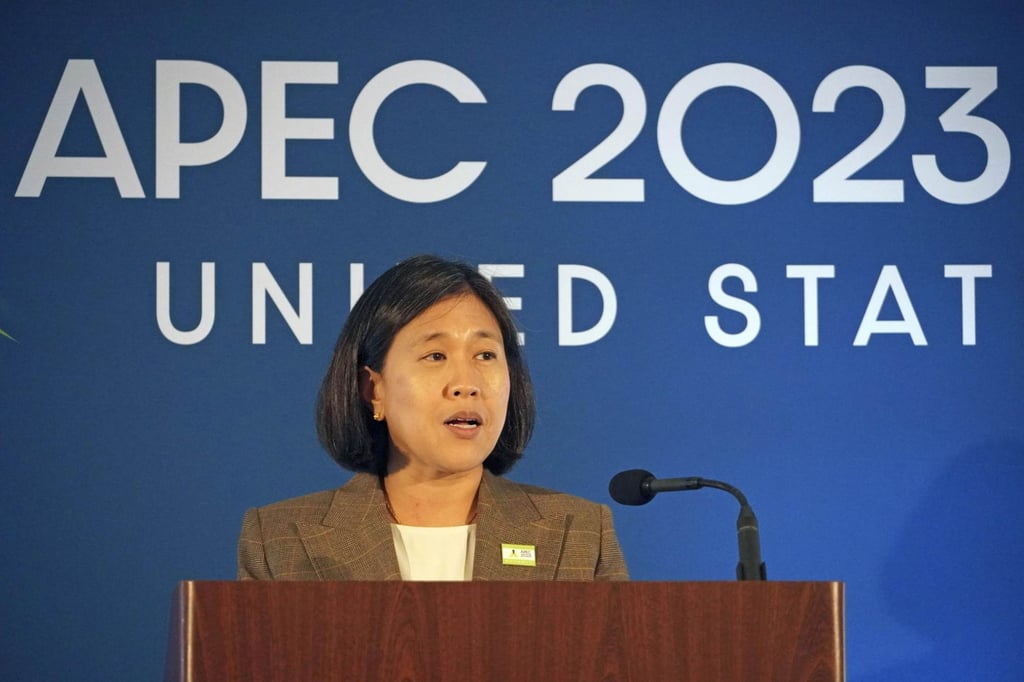For much of last week, senior US officials were engaged in a hectic schedule of diplomatic meetings across Asia. The meetings took place against the backdrop of the run-up to the American presidential elections which will take place in November and the spectre of former US president Donald Trump’s return to power.
Trump’s possible return has sparked a serious round of stocktaking around the world, including in Asia. The last time Trump was in office, he asked that US allies in Asia do more heavy-lifting in service of shared security interests. Ties with China were frosty and marked by an escalating trade war. On North Korea, Trump oscillated between bombast and bonhomie, unsettling US allies in East Asia.
According to a new Trump Risk Index from the Economist Intelligence Unit, several Asian economies, including some with close security ties to the US, are especially vulnerable when it comes to trade. Among the 10 major trading partners that are most at risk due to potential trade policy changes under Trump, six of them are in Asia.
There are already ominous signs. During a campaign speech last year, Trump had called US President Joe Biden’s flagship Indo-Pacific Economic Framework (IPEF) “TPP Two”, referring to the Trans-Pacific Partnership trade deal from which Trump had withdrawn as president. He promised to similarly pull out of the IPEF if elected.
US allies in Asia are preparing for these eventualities by taking matters into their own hands and reducing their dependence on the United States. Last month, for instance, the Philippines reached a provisional agreement with China to allow the resupply missions by Filipino soldiers to a beached naval ship in the South China Sea.
The agreement followed confrontations between Chinese and Filipino vessels over previous resupply missions. In the aftermath of those flare-ups, reports suggested that the US had offered to help the Philippines in conducting the resupply operations. But the Philippines had turned down those offers, preferring instead to deal with China on its own.
US allies are also coming together among themselves, driven by the prospect of uncertain support from Washington. In East Asia, Japan and South Korea continue to make steadfast attempts to tide over decades of troubled history. Last week, the two countries joined to take charge of a network within the IPEF designed to respond to supply chain disruptions. Japan also recently signed a landmark deal with the Philippines to allow the deployment of forces on each other’s soil – the first agreement in Asia of its kind to be signed by Japan.
For its part, the Biden administration has been trying to reassure allies in Asia against the uncertainties of a Trump presidency. US Secretary of State Antony Blinken recently attended a Quadrilateral Security Dialogue foreign ministers’ meeting with counterparts from Japan, Australia and India. That was followed the next day by a trip to the Philippines where the US pledged US$500 million in military aid. The US, Japan and South Korea also signed a trilateral memorandum for policy consultations, information sharing and joint exercises.
Yet, despite these hectic developments and far more conciliatory rhetoric compared to Trump over the last three years, Biden has broadly mirrored Trump’s protectionist policies. Biden has continued many Trump-era trade tariffs. He has not rejoined the Trans-Pacific Partnership or presented another equivalent trade deal. Moreover, although Trump has railed against the IPEF, that framework continues to deny Asian partners access to the US market. Last November, Biden pulled out of IPEF negotiations on tariff reductions, leaving that issue unresolved indefinitely.

On security issues, although Biden has been relatively more willing to extend military aid to his allies, he has retained Trump’s expectation that Asian partners come together to do more on their own for themselves. Instead of setting the agenda and leading the discourse, the US has reduced itself to a convening power, ceding space to allies in framing and executing initiatives.
To be fair, this has broadly worked well, as shown by the flurry of dialogue and agreements between countries such as Japan and the Philippines, India and Vietnam and Japan and South Korea. Yet, for Washington in the long term, this strategy cedes leverage by making allies less dependent on the US. It also bolsters the development of a multipolar Asia in which US power will be significantly diluted.
There are already signs that Washington has lost some sway. In recent months, US allies have publicly defied criticism from Washington and engaged with Russia, which they see as an important player in advancing multipolarity in the region. Over the last couple of months, Russian President Vladimir Putin has been hosted in Vietnam, and Indian Prime Minister Narendra Modi met Putin in Moscow, signalling the expanded geopolitical space available to US allies in Asia.
Many analysts and policymakers in Asia may fear Trump’s return. But perhaps barring colourful rhetoric, Trump is unlikely to follow a course substantially different from Biden’s. The results of prolonged US protectionism are already visible in the region, diluting US leverage. Given domestic political pressures, neither Biden nor Trump may particularly mind that. But if the US wants to protect its role in the region, it must drive greater economic engagement between itself and its Asian partners – far more than Biden has done or Trump is likely to do.
Mohamed Zeeshan is a foreign affairs columnist based in Washington, DC, and the author of “Flying Blind: India’s Quest for Global Leadership”



